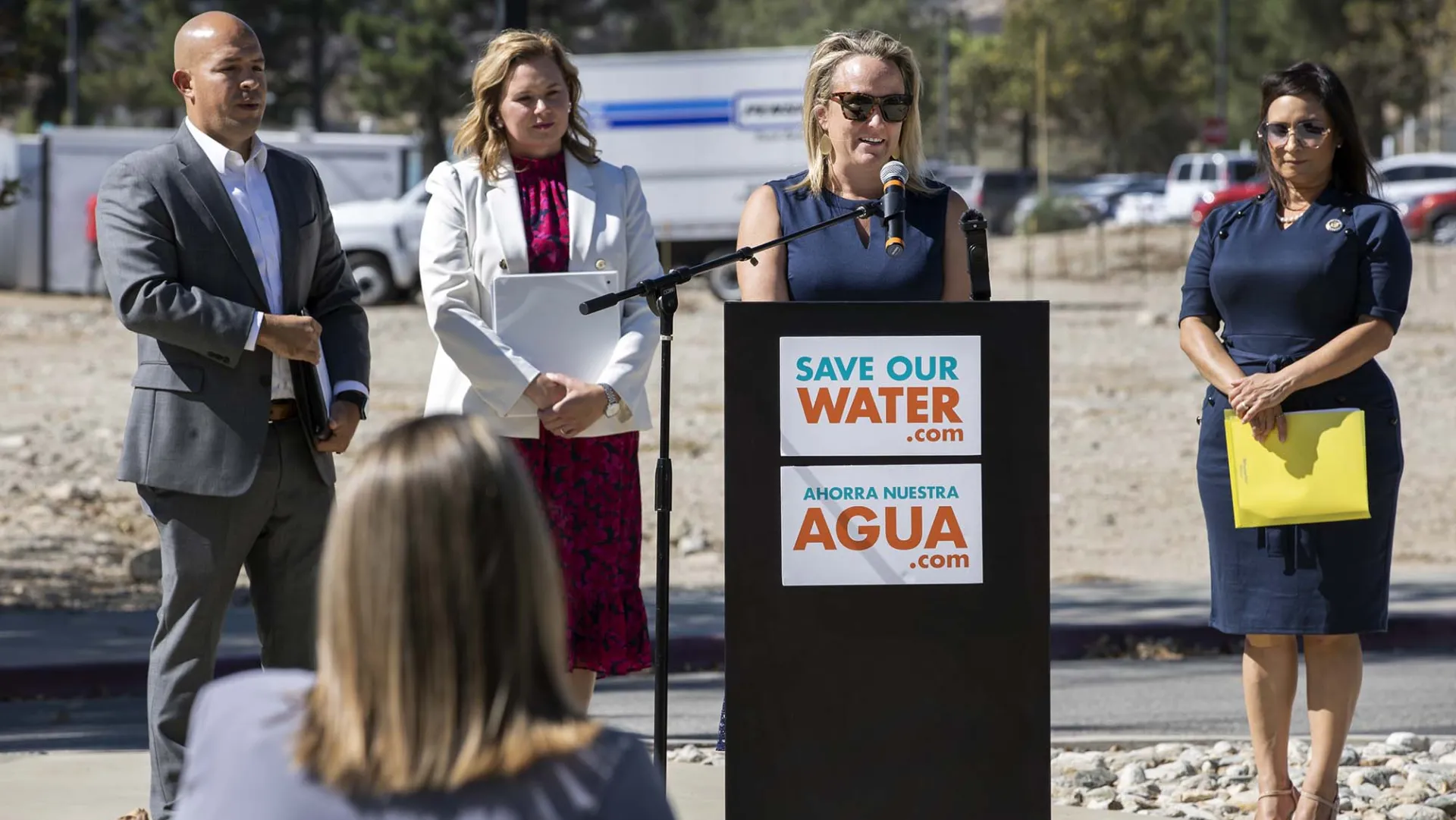Joe Gutierrez | Office of Strategic Communication | (909) 537-5007 | joeg@csusb.edu

Cal State San Bernardino plays an important role working with the region’s water agencies in addressing the Inland Empire – and the state’s – water crisis brought on by the prolonged drought, a university professor said at the Save Our Water Roundtable.
CSUSB hosted the event on Sept. 19 that brought to campus representatives of the San Bernardino Valley Municipal Water District, San Bernardino Municipal Water Department, Yucaipa Valley Water District, East Valley Water District, West Valley Water District, and the San Bernardino Valley Water Conservation District. Also attending the gathering where regional cooperation and projects were highlighted were Dorene D’Adamo, vice chair of the State Water Resources Control Board, and state Sen. Rosilicie Ochoa Bogh of Yucaipa.
Tomás D. Morales, CSUSB president, welcomed the participants.
“This summer, which appears to be extending its stay into what we might have traditionally thought of as the beginning of the fall, has demonstrated to us the urgent need to grapple with water issues in our region, and our state as a whole,” he said. He recalled how, at the height of the heatwave, the state Independent Operator sent a text message throughout California urging residents to conserve energy or risk a failure to the energy grid. The response in the drop in energy demand “was pretty spectacular.”
“Now is the time to do something similar with our approach to water use,” Morales said. “Please know that CSUSB is fully committed to doing our part. Not only to conserving water usage on our San Bernardino and Palm Desert campuses, but also to partner with the region and the state to come up with solutions to ensure our state’s resilience for years to come.”
He pointed to conservation efforts on campus, such as replacing turf with drought-tolerant landscaping and the use of low-flow water fixtures, as well as university resources such as the Institute for Watershed Resiliency and its affiliation with CSU-WATER, which draws upon the resources of all 23 California State University campuses, providing education, research and policy development.
Jennifer Alford, CSUSB department chair and associate professor of geography and environmental studies, said the university is looking at the issue from an interdisciplinary approach, working across conditions that span the environmental to the economic, “so that we can be more innovative about our partnerships.”
And the regional partnerships provide opportunities for service learning for students, many of whom are the first in their families to go to college and have a strong desire to remain in the region, which means they are invested in the community.
There is an “underlying need to educate the next generation to ensure they understand the systems that are functioning here, how everything is connected,” Alford said. “So how we really we see our role in supporting all of your efforts is to ensure that our students are getting a well-rounded education that include the experience of working and learning from all of you.”
She also mentioned the academic resources the university provides, and how those are also opportunities for collaboration and partnerships.
“We’re thinking about how we can understand the needs of the community, how we can bring those into our campus, and how we can collaborate through our resource and knowledge to provide those opportunities and be more intentional about career pathways for our students that serve you eventually,” Alford said. “And we’re also using that to inform how we teach, and how what we’re learning in our academic world can help bring resources, innovation and different ideas to you.”
Through all those resources, it points to “what the CSUs do really well, and that’s serving our communities. That’s why we are here. That’s our No. 1 goal. And I think that’s a platform that we can all build together.”